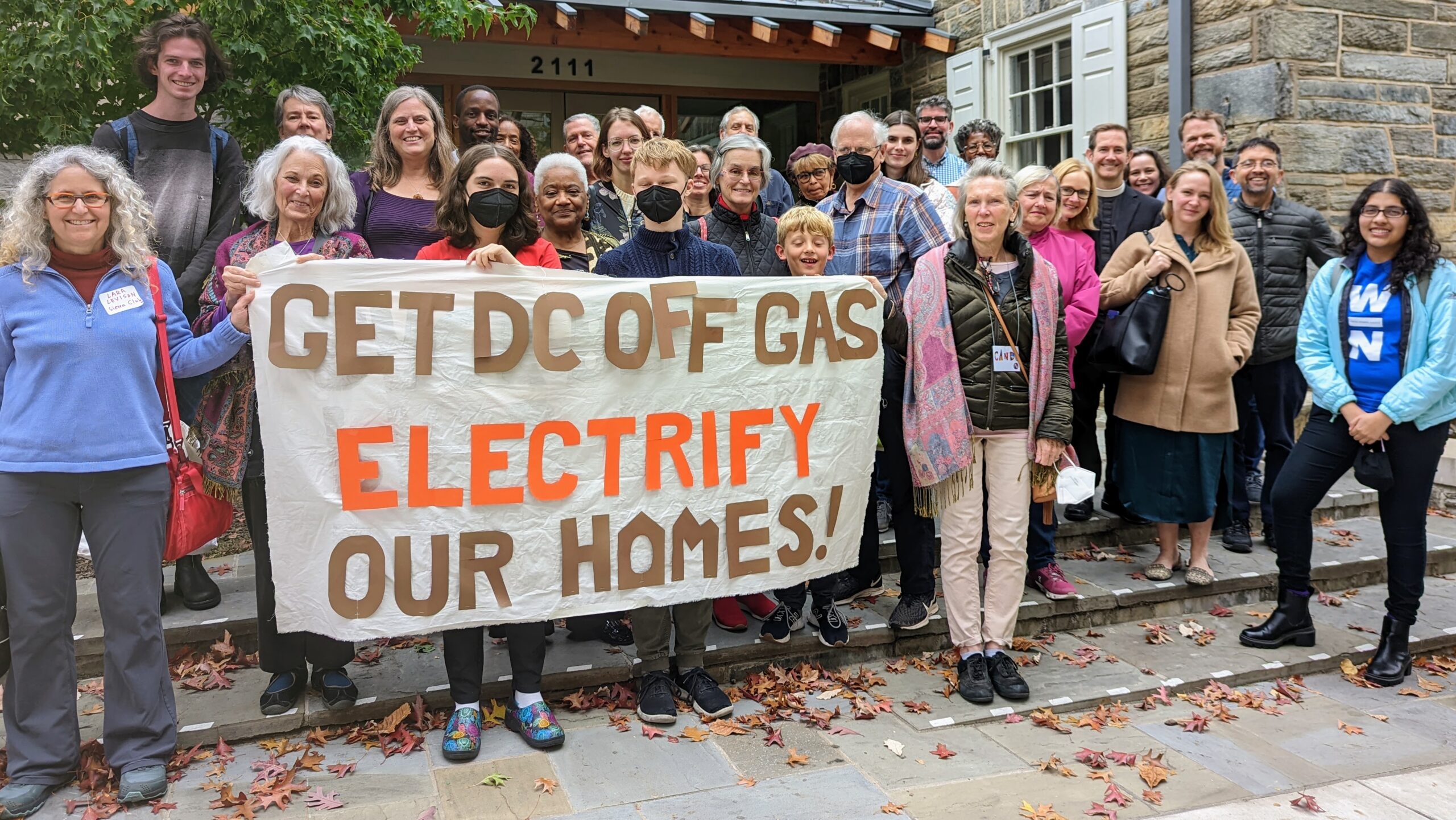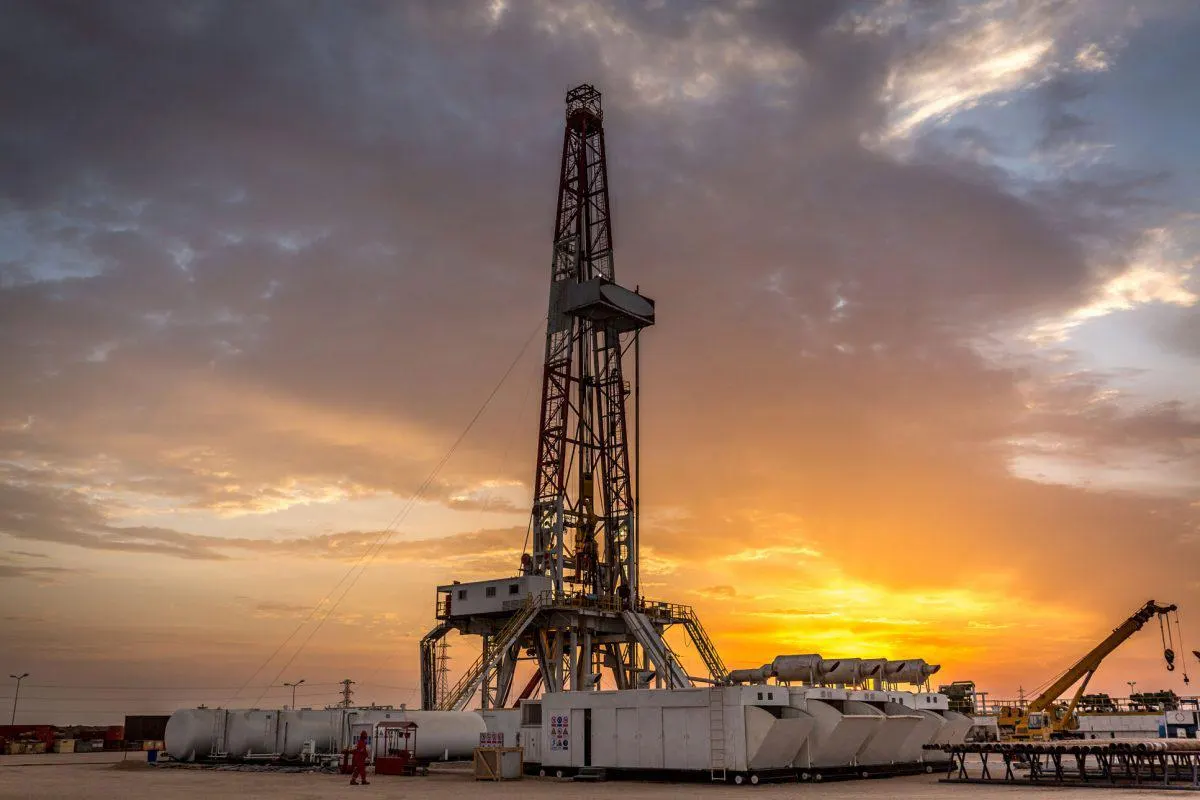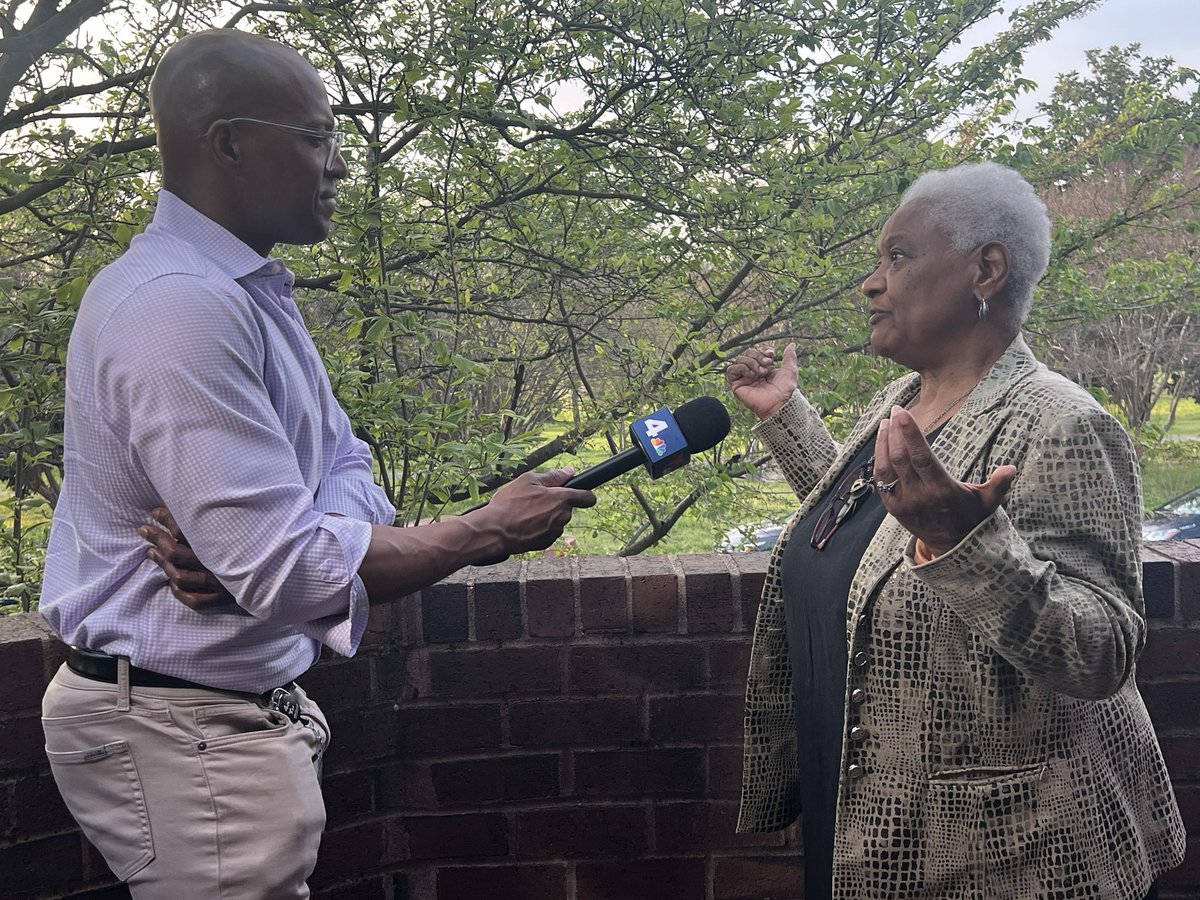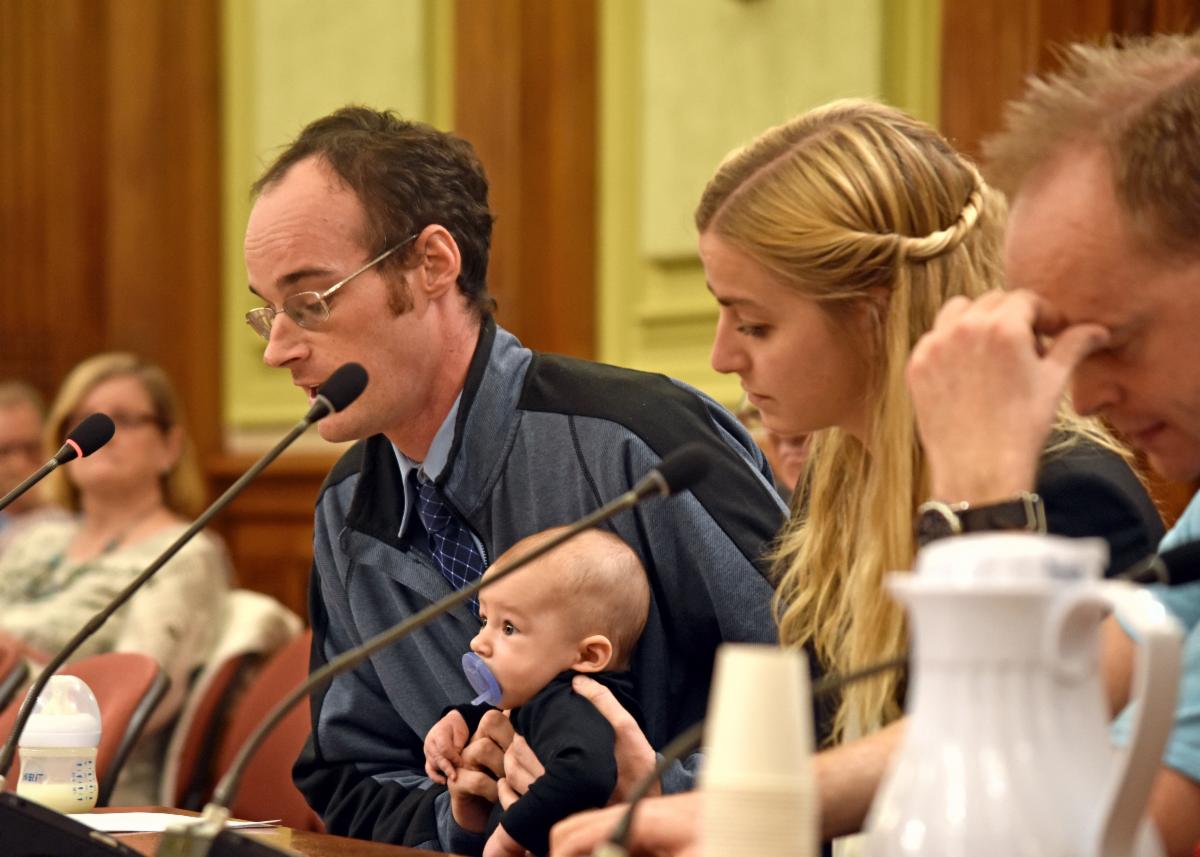Residents, advocates to D.C. Council: Prioritize affordability, public health by passing Healthy Homes Act
Legislation would help 30,000 low-income residents lower energy burden, access cleaner air by ending the use of fossil fuels in homes
May 10, 2023
WASHINGTON, D.C. – Yesterday 29 public health, interfaith, environmental justice, and climate organizations submitted a letter calling on the D.C. Council to pass and fund the Healthy Homes and Residential Electrification Act of 2023 (B25-0119), protecting public health and investing in affordability while lowering emissions from homes in the District. This letter comes as more than 80 residents and advocates testified on the Healthy Homes Act, which would help 30,000 low- and moderate-income District residents retrofit their homes to replace gas appliances with electric alternatives.
“Methane gas that is fracked and piped into our homes is responsible for about a quarter of D.C.’s climate pollution. When burned, methane emits carbon dioxide, the most common climate pollutant. When it is leaked directly into the air, methane gas is 80 times more powerful than carbon dioxide as a pollutant. The District has pledged to phase out fossil fuel use by 2045. Our electricity is moving toward 100 percent renewable generation and we’re making progress on reducing carbon emission from transportation through electrification and mode shift. But when it comes to phasing out fossil fuel combustion in our homes, DC is woefully behind,” said Mark Rodeffer of the D.C. Sierra Club.
Michelle Hall, a native Washingtonian and resident of the River Terrace neighborhood, spoke about her experience testing outdoor and indoor emissions from gas in her community.
“Like so many others I thought having gas stoves was the way to go. But when you know better, you do better. And now I know that having a gas stove is hazardous to the health. Not just hazardous to my health but hazardous to other people’s health as well,” said Hall.
“Climate impacts so many parts of our lives including home ownership. We need to get off of unhealthy gas that increases childhood asthma as well as increases other respiratory illnesses, and we need to repair homes so that our neighbors can maintain and build wealth. Just as the problems are connected, we believe that the answers are connected. We can stabilize our communities and create healthier, greener, and safer communities by simultaneously repairing homes and electrifying them,” said Hall.
The Healthy Homes Act would build on a $2 million pilot proposed by the Transportation and Environment Committee to the River Terrace and Deanwood neighborhoods to help residents retrofit their homes, including measures to increase energy efficiency and weatherization, and swap out gas appliances with all-electric alternatives such as heat pumps and induction stoves.
Charlene Pierce, a resident of Deanwood and native Washingtonian spoke about how the Healthy Homes Act could help build Black homeownership.
“With WIN we have been door knocking in my neighborhood. Every time we go, I always hear a list of repairs that people cannot afford. People without AC in the summer or without heat in the winter. People without insulation. We spoke with a lady who’s dad bought their home in 1955. But at this time significant repairs are needed. She spoke about the changes that have taken place in Deanwood over the years and many of the longtime neighbors have moved due to increased costs of living.”
“The pilot programs in River Terrace and Deanwood and this new funding source is a chance for the D.C. Council to reverse the tide and begin investing in Black wealth by making sure our homeowners can not only afford to remain in place but improve their quality of life through whole home retrofits. Whole home retrofits doesn’t just mean new appliances, it means weatherization, it means insulation, better air quality, and a chance to build Black wealth,” said Pierce.
While the D.C. Council has passed legislation to begin the phase out of fossil fuels in new buildings, D.C. must also provide a pathway to help existing residents switch from gas to all-electric. Through the Healthy Homes Act, D.C. can lower the cost of monthly energy bills through weatherization upgrades and the installation of highly efficient electric appliances such as heat pumps. According to Rewiring America, the average D.C. family would save $378 per year from efficient electrification.
Helping low- and moderate-income District residents transition to all-electric appliances will deliver cleaner air to communities that have been disproportionately impacted by air pollution as a result of historical practices like redlining. Nitrogen oxides (NOx) pollution and secondary particulate matter pollution (PM 2.5) from gas appliances is a significant source of health-harming air pollution, and NOx pollution also directly contributes to the formation of ozone. Both NOx and ozone are respiratory irritants, and breathing ozone can also be deadly. While D.C. recently received an “F” grade for ozone pollution, the Southeast neighborhoods of D.C. experienced more than four times as many premature deaths related to air pollution when compared to the rest of the District.
Gas appliances also are a significant driver of poor indoor air quality, emitting dangerous air pollutants such as carbon monoxide, nitrogen dioxide (NO2), particulate matter, and formaldehyde when in use. Even when turned off, gas appliances have been found to leak carcinogens such as benzene. Children who grow up in homes with gas stoves are 42% more likely to develop asthma symptoms.
Barbara Briggs, a member of the Friends Meeting of Washington’s Committee on Peace and Social Concerns, spoke about recent gas stove testing demonstrations her organization has conducted to understand the level of pollutants from gas appliances in more than 100 homes around the D.C. area.
“There is no standard for [nitrogen dioxide] in indoor air, but EPA stipulates 100 Parts per billion as the maximum safe level for one hour of exposure outdoors. In many homes we are seeing NO2 levels climb to well over 100 PPB after just 15 to 30 minutes. In some kitchens, including my own, we have measured nitrogen dioxide levels of 200 to 400 PPB in less than half an hour of running the oven and a couple of burners, like you might to cook a normal dinner,” said Briggs.
Briggs also highlighted the potential of the Healthy Homes Act to help low- and moderate-income residents switch to healthier, safer options. “The good news now is that we have a choice. Induction stoves work far better than gas. Highly efficient air or ground source heat pumps can heat our homes efficiently, reliably, economically –and they don’t pollute our living spaces. This is a change that will be important and beneficial for all of us. Let’s lean into it. Low and moderate income families will need help to gain equitable access to cleaner healthier electric appliances for heating and cooking in their homes,” said Briggs.
Rodeffer also noted how without intervention, low-income gas customers may be left to shoulder the burden of costly pipeline replacement programs, which may reach as high as $4.5 billion according to Washington Gas.
“It makes no sense to spend billions of dollars on pipeline infrastructure after D.C. has committed to transitioning off of fossil fuels. These multi-billion dollar expenses are paid for by gas ratepayers. Low and moderate income homes should be first in line to get electrification so they are not forced to pay for dirty energy profiteering. That’s why the D.C. Council must pass and fund the Healthy Homes Act,” concluded Rodeffer.
###









